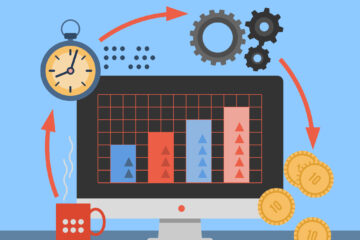In today’s hyper-competitive business landscape, companies striving for long-term success must invest not only in their products or technologies but also in the people behind them. Human Resources Management (HRM) has become one of the most critical functions driving organizational growth, innovation, and sustainability.
Attracting top talent is no longer a luxury—it’s a necessity. In an era where the right minds can outmaneuver outdated strategies, HRM acts as the cornerstone of sustainable business success. From building strong corporate cultures to crafting compelling employer brands, this article explores how HRM can become a growth engine when approached strategically.
The Evolving Role of HR in Modern Business
Gone are the days when HR was only concerned with payroll, hiring, and employee disputes. Modern HR departments are strategic partners in business development. They influence corporate direction, drive innovation, and build cultures that retain high-performers.
Companies like Google and Netflix don’t dominate industries just because of tech—they do it because they master people management. Their HR strategies revolve around performance management, leadership development, and cultural coherence.
Why Attracting Top Talent Matters Now More Than Ever
The post-pandemic world has transformed the job market. Remote work has opened global opportunities, and candidates are no longer restricted by geography. Attracting top talent today means offering more than just a paycheck.
You need to present a mission, a culture, and values that align with the aspirations of modern professionals. When companies succeed in doing this, they don’t just hire workers—they build armies of passionate brand ambassadors.
Crafting a Compelling Employer Brand
Your brand isn’t just what customers think of you—it’s also what potential employees think. A compelling employer brand attracts high-performing individuals who believe in your mission.
This starts with transparency. Show your company culture through real employee stories, testimonials, behind-the-scenes content, and your stance on social and ethical issues.
Even your job postings should reflect your values and tone. Speak to the right candidates, not just any candidates.
Building a Strong Organizational Culture
Culture eats strategy for breakfast. A toxic culture can drive away your best performers no matter how good the salary or benefits. On the other hand, a supportive, inclusive, and engaging work environment can transform even average employees into loyal high-achievers.
Strong cultures are built on:
- Open communication
- Shared values
- Clear leadership
- Recognition and reward systems
Culture must be intentional, measured, and reinforced from the top down.
Recruitment Strategies That Actually Work
Top talent is not found—they’re attracted. Traditional recruitment methods don’t cut it anymore. Cold emails and job board ads aren’t enough.
You need:
- Targeted sourcing: Use LinkedIn, GitHub, Behance—wherever your audience hangs out.
- Employee referrals: Incentivize your team to bring in like-minded professionals.
- Employer branding content: Blogs, videos, social media.
- Campus recruitment: Start early and build loyalty from graduation day.
Also, keep in mind: The best candidates often aren’t looking. You have to woo them.
The Role of AI and Data in HR Management
HR is not exempt from digital transformation. Using AI in recruitment can save time and reduce bias. HR analytics can show turnover trends, engagement levels, and predict high-performer churn.
AI tools can:
- Pre-screen CVs
- Schedule interviews
- Monitor team sentiment
- Suggest training programs
These tools free HR teams to focus on strategy and culture—not paperwork.
Retention: It Doesn’t Stop at Hiring
Attracting talent is half the battle. Retaining them is the war. High turnover drains resources and damages morale.
Key retention strategies include:
- Clear career paths
- Competitive compensation
- Regular feedback
- Flexibility (work-life balance)
- Inclusion and belonging
Regular pulse surveys and exit interviews help keep a finger on the organizational pulse.
Diversity, Equity, and Inclusion (DEI) as a Growth Catalyst
Diverse teams are more innovative, perform better, and are more adaptable. A company that fosters DEI doesn’t just fulfill a social obligation—it builds business resilience.
Top talent wants to work where they feel seen and heard. DEI isn’t just a HR policy—it must be a business priority.
Upskilling and Internal Mobility
Hiring externally is great, but promoting from within builds loyalty and is often more cost-effective. Upskilling programs keep your workforce current and future-ready.
Use:
- Microlearning platforms
- Mentorship programs
- Leadership training
- Certification incentives
Internal mobility encourages employees to stay and grow with the company.
HR’s Strategic Seat at the Executive Table
For HR to truly drive growth, it must be part of business strategy. HR leaders should work directly with CEOs and COOs to align talent goals with business goals.
Metrics like:
- Revenue per employee
- Employee Lifetime Value (ELV)
- Time-to-productivity
…should be tracked and tied to strategic decisions.
Global Talent Acquisition and Remote Work
The talent pool is now global. Remote work allows access to top performers from any continent. This opens up diversity, fresh perspectives, and cost advantages.
But managing a global team needs tools and policies:
- Time zone coordination
- Virtual onboarding
- Legal compliance
- Cross-cultural communication training
Done right, it can give you a massive edge over competitors limited by geography.
Employee Experience as a Competitive Advantage
From the onboarding process to the exit interview, every interaction counts. A great employee experience improves retention, referrals, and even customer satisfaction.
Design the employee journey with as much care as the customer journey. Your team deserves a seamless, respectful, and empowering experience.
Measuring HR Impact on Business Outcomes
What gets measured gets managed. Track the ROI of your HR efforts.
Important metrics:
- Offer acceptance rates
- Cost-per-hire
- Turnover rate
- Employee Net Promoter Score (eNPS)
- Engagement levels
Tie HR KPIs directly to company performance to prove strategic value.
Challenges in Attracting and Managing Talent
Challenges include:
- Competitive salaries
- Remote work expectations
- Candidate ghosting
- Mental health issues
- Skill shortages
HR leaders need to remain agile, data-informed, and human-centric to address these.
Future of Work and HR’s Role in Shaping It
Work is changing. Automation, AI, and Gen Z entering the workforce will redefine company cultures and processes.
HR must lead:
- Hybrid work models
- Emotional intelligence development
- Sustainable workplace policies
- Continuous reinvention
The HR of the future is part technologist, part psychologist, part strategist.
Conclusion
Human Resources is no longer an administrative function—it’s the heart of strategic growth. By attracting, developing, and retaining top talent, HR creates sustainable competitive advantages.
If companies want to survive the turbulence of the modern economy, investing in HR isn’t optional. It’s vital.
Top talent builds top companies—and HR is the magnet that attracts them.



